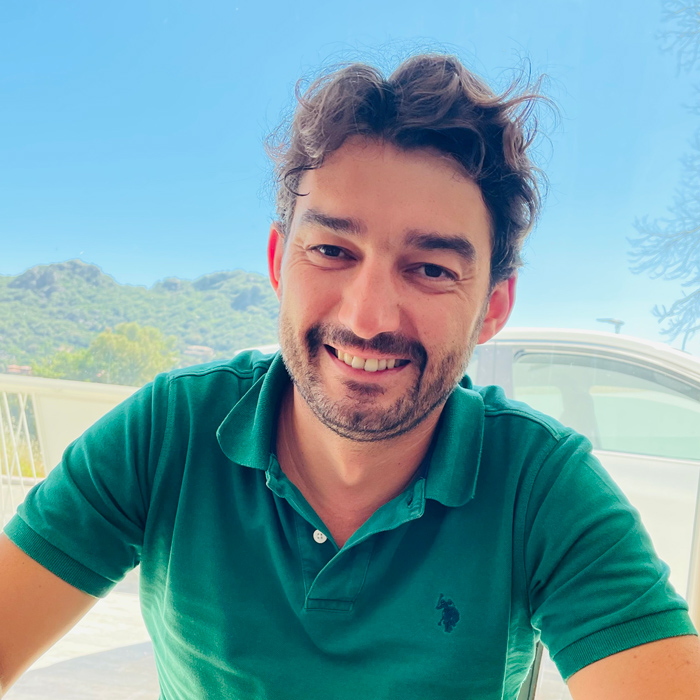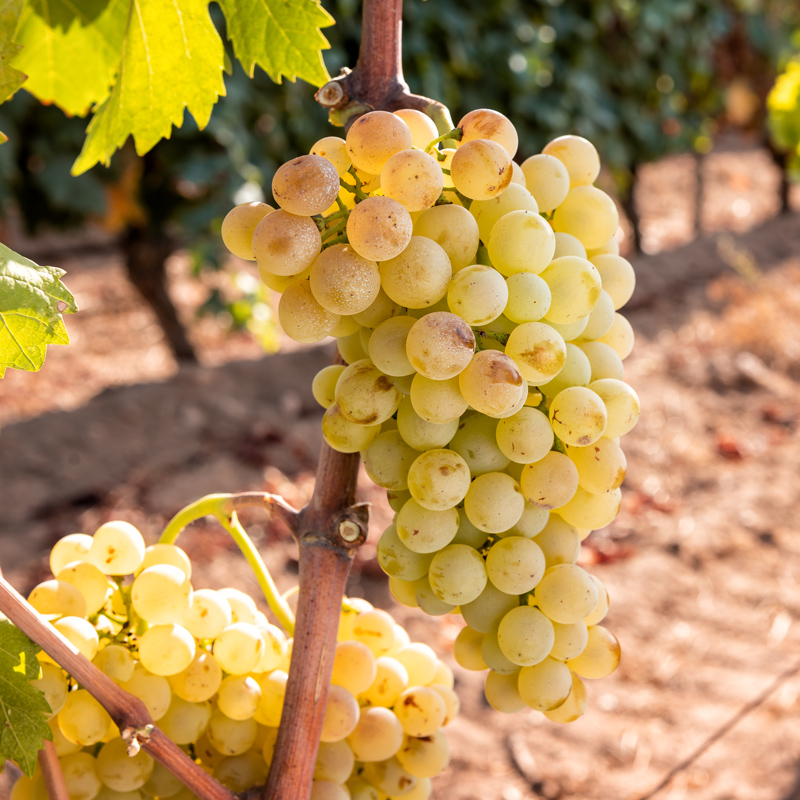 Rising temperatures, lack of rainfall, wines rich in alcohol and concentrated: Climate change is also making itself felt in Sardinia. At the same time, more and more investors are discovering the island and putting money into new wineries. Raffaella Usai spoke with oenologist Andrea Pala about the future of Sardinian viticulture.
Rising temperatures, lack of rainfall, wines rich in alcohol and concentrated: Climate change is also making itself felt in Sardinia. At the same time, more and more investors are discovering the island and putting money into new wineries. Raffaella Usai spoke with oenologist Andrea Pala about the future of Sardinian viticulture.Mr Pala, you work as a consulting oenologist for several wineries in Sardinia and also on the Italian mainland. This means that you are on the road a lot, but thanks to the work in different appellations, you certainly gain a lot of experience that you can in turn apply in other areas.
Andrea Pala: Yes, absolutely. I work mainly in Sardinia, but also in Sicily, Calabria, Campania, Franciacorta, Marche and Tuscany. That means I have to deal with the most diverse terroirs, grape varieties and styles, which makes the job extremely exciting.
Which wines are particularly close to your heart?
Andrea Pala: I come from Gallura, the home of Vermentino. That's why I tend to focus more on white wines and especially on autochthonous grape varieties. Besides Vermentino, I work with the very rare white variety Arvisionadu, for example, which, according to recent studies, is the oldest grape variety in Sardinia. It is cultivated on only 17 hectares. These are the kinds of projects that drive me.
Let's talk about Sardinian wines in general. My impression of the past few years is that many wines have become increasingly alcoholic and lush and at the same time have lost elegance and finesse. What do you say to this?
Andrea Pala: As far as alcohol is concerned, I agree with you. That is due to the changed climatic conditions. There were vintages when the grapes could not fully reach phenolic ripeness because of the high temperatures. Last year, the harvest was very small because of late frosts. You can see that in the wines, too. But in general, the quality of Sardinian wines, especially of the small and medium-sized wineries, has noticeably improved. As everywhere else, the big wineries produce what the market demands. And many of them focus on residual sweetness and concentration, less on elegance and precisely elaborated fruit.
 Vermentino grapes ©123rf.com
Vermentino grapes ©123rf.comThere are some Vermentino di Gallura with 14.5 percent alcohol by volume that I personally find lacking in drinkability. Is that the future of Vermentino?
Andrea Pala: (laughs) No question, you can't drink a whole bottle of such wines. There are different philosophies for Vermentino, the mineral style of Vermentino di Gallura and the simpler, fruitier style of Vermentino di Sardegna. For me, a perfect white wine is between 12.5 and 13.5 percent alcohol by volume. Then the Vermentino also finds its harmony between its grippy structure and its acid framework.
Some producers overdo it, however, and the result is such alcohol bombs that you've had enough after just one glass. But for a long time, that's exactly what many consumers wanted. I look for something different in the wines I make. Varietal typicity and independence, but these must never get in the way of drinking pleasure. What is produced is ultimately decided by the winemaker. He knows his customers and what they want. I can only advise.
Is it still possible at all to produce wines with pronounced acidity in Sardinia?
Andrea Pala: On the granite soils of Gallura, we have had to struggle a lot with acid losses in recent years, while the limestone soils around Sassari in the west of the island, for example, give the wines more acidity. A winery I work with has planted ten hectares there on a small plateau and the results are amazing. The soils make the difference. On the other hand, the wines don't show the aromatic complexity that is achieved in Gallura.
Sardinia, like Sicily, is a region that is climatically predestined for organic viticulture. How popular is organic here?
Andrea Pala: In fact, more and more winegrowers in Sardinia are going organic. Also because it is much easier to do without chemicals compared to other regions. A conventionally cultivated vineyard here has to be sprayed with systemic pesticides between four and five times a year. An organic vintner has to go out five to six times. So the effort is really not much greater. There are many wineries that are also certified organic, but there are also some that don't want an organic label for reasons of mentality. Especially smaller wineries are afraid of the bureaucracy that certification entails.
Can this change with the next generation?
Andrea Pala: Definitely. You can already feel very strongly that a generational change is taking place in viticulture. Many vineyards that used to be cultivated as a sideline have been taken over by the successors. They no longer sell their grapes to the winery cooperatives, but are building a future as self-marketers. They attach importance to quality and sustainable cultivation and tend their vines with a different standard.
Keyword climate change: Has the grape harvest in Sardinia shifted significantly?
Andrea Pala: The differences between the vintages are very clear, much greater than before. I'll give you an example: three years ago, I harvested the grapes from a vineyard here in Gallura at the end of October. The year before, the harvest of the same vineyard started at the end of August. The wines from both vintages had the same alcohol content. My grandfather used to harvest on 5 October, for the harvest festival in our village. Everyone picked their grapes on that date. Today, the harvest usually starts in the first or second week of September, in extreme years already in August.
How do you deal with the climatic changes?
Andrea Pala: It is a big challenge. This year was extreme again. There was little to no rain in winter and spring, and the temperatures were already very high in June. I generally try to pick part of the grapes very early in order to have a partial quantity later that is not too rich in alcohol. In the end, it's always about a balance, a harmony in the wines. The high alcohol needs enough counterparts to stand up to it. Consumers are put off by a white wine that has 14 or 14.5 percent alcohol on the label, especially abroad. That is why the goal is always to keep sugar levels in check already in the vineyard. And for that, you need good agronomists.
What strategies do the agronomists pursue in the vineyard?
Andrea Pala: On the one hand, they are experimenting with rootstocks that are better adapted to the changed climate. On the other hand, they are researching clones that are suitable for the respective terroir. In one winery I advise, eleven different Vermentino clones were planted. Now we are observing which of the clones give the best results. I look for saltiness in the wines. And lately I find it mostly in vineyards near the coast.
I look for saltiness in the wines.
That's interesting. In the past, viticulture in Sardinia was more inland, less on the coast. Are there many new vineyards there now?
Andrea Pala: Yes, many entrepreneurs from Germany and England have invested in vineyards on the coast. New wineries have sprung up, some of which I manage. You can already speak of a small boom in the past five years.
 |
Why do these entrepreneurs invest in Sardinia in particular?
Andrea Pala: The positive image of the island as a popular holiday destination with its unspoiled nature plays its part. In addition, the prices per hectare are comparatively low. Most do not buy existing vineyards, but plant new vines. While in other regions the wineries go to higher altitudes with their new plantings, the opposite can be observed in Sardinia. Here they look for the proximity of the sea. And that could be the right decision in the long run. The vineyards benefit from the constant breeze, the grapes are healthy and have precisely this saltiness that makes them so interesting.
What role do current trends in the wine world play in Sardinia? Have rosé and sparkling wines gained in importance?
Andrea Pala: Almost every Sardinian winery now has a rosé wine in its range, but the domestic market does not demand rosés. The few quantities are produced almost exclusively for export. Traditionally, very few sparkling wines are produced here. Most of them are not bottle-fermented but tank-fermented wines. Although sparkling wines are an important market segment, we cannot be competitive with our wines. We have to sell our wines more expensive than Prosecco - but without having its image. Today, all sparkling wines that are not called Prosecco have a hard time. Nevertheless, the share of Sardinian sparkling wines is increasing. However, I think that every region should concentrate on what it is particularly suited for. And Sardinia is not known for sparkling wines, but for characterful and distinctive white and red wines from autochthonous grape varieties.